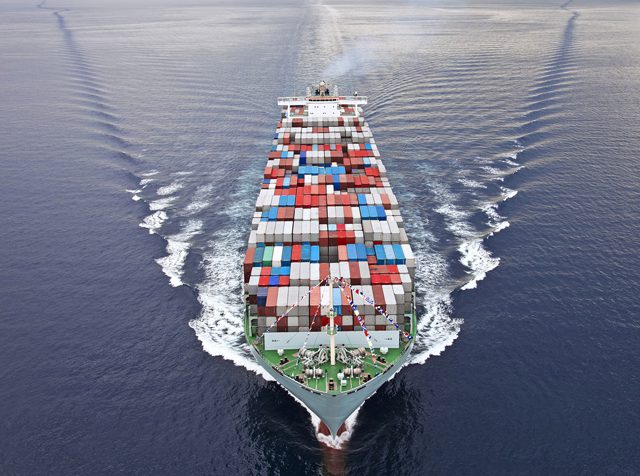By Gavin van Marle,
Apparently wary of igniting the wrath of skeptical shippers or prodding the regulatory bodies, the prospective partners in the P3 alliance seem determined to downplay the significance of their proposed groundbreaking partnership. Indeed, the mega-carrier trio of Maersk Line, MSC and CMA CGM have all relegated the eagerly-awaited schedule detail to general news within their websites.
MSC appears to have been the first to reveal the itineraries of the east-west trades tie-up with its 72-page presentation appearing on Friday morning. This was followed somewhat later by CMA CGM’s 70-page disclosure and Maersk’s relatively slim-line 13-pager of highlights.
Taking the key Asia-North Europe trade lane, at first glance MSC’s Asia-North Europe named loops appear to match perfectly with the FAL and AE loops from CMA CGM and Maersk respectively with for example MSC’s Albatross loop showing the same port rotation as the FAL1 and AE1 services of its P3 partners.
The 10 x 18,000 teu ships – although interestingly, MSC said that the service would be operated by 10 19,000 teu vessels, a ship size which of course does not yet exist – deployed on the Albatross/FAL1/AE1 service will make this loop the flagship of the P3 network and will interestingly also include a call at Wilhelmshaven’s JadeWeserPort as well as the nearby port of Bremerhaven.
Europe’s newest port, Wilhelmshaven, in which Maersk’s sister company APM Terminals has a 30% stake, has seen little traffic since opening for business a year ago and has been as good as idle. However, this is set to change as the port has also been included on the AE5/FAL3/Shogun service and will from next year be receiving two major calls per week.
The creation of the alliance has further demonstrated the fickle nature of the transhipment business, particularly from ports’ perspective. As noted last week, one major loser is Valencia, which hitherto was MSC’s primary West Med hub, which propelled it to becoming the largest container port in the Mediterranean.
Four of the eight new P3 Asia-North Europe strings, feature a Mediterranean-South Europe call – including a call at the Portuguese port of Sines – but there appears to be a split in choice of transhipment hub depending on the direction of the sailing: The Albatross service includes a call at Algeciras ion its westbound leg, but prefers Tangiers on the eastbound leg; a call at Sines on the westbound leg of the Lion//FAL2/AE2 service is replaced by a call at Malta eastbound; there is no Med call westbound on the Condor/FAL5/AE6 service, with Southampton the first European port of call, but calls at both Algeciras and Beirut on the eastbound sailing; and similarly on the Silk/FAL9/AE10 service there is a call at the Italian port of Gioia Tauro on the eastbound leg.
Valencia is included as a port of destination on two of the five Asia-Med P3 loops.
There is a similar theme to the choice of south-east Asia hub, with Tanjung Pelepas generally the preferred hub for all but two of the eight services on the westbound leg, with Port Klang and Singapore taking hub status for one service each. However, on the return leg Singapore is the hub of four services, Tanjung Pelepas three and Port Klang one.
With all the regulatory hurdles still to overcome in the EU, China and the US the partners have until now not been prepared to be more specific in terms of a start date than referring to the second quarter of 2014. However, CMA CGM has identified a target date of May of next year for the formal launch of joint services.
Furthermore, Maersk’s caveat, in difference to MSC’s ‘subject to the approval of regulatory authorities’, is that the proposed network is subject to the P3 partners obtaining ‘regulatory approval and assurances they deem necessary’.
Moreover, Maersk and CMA CGM cannot seem to agree on the number of loops and vessels that will go to make up the behemoth alliance with the former saying 28 loops deploying 252 vessels and the French carrier referring to 27 loops operated by 240 ships.
All of which will give the newly appointed P3 CEO Lars Mikael Jensen plenty of work to do as he and his 200-strong team commence the mammoth task of putting the theory into practice. Some observers however, have questioned whether divergence in details in the individual carriers’ announcements of the new network may be a sly ploy to convince regulators that cooperation between the three companies is less than would prevent the alliance gaining approval.

 Join The Club
Join The Club











